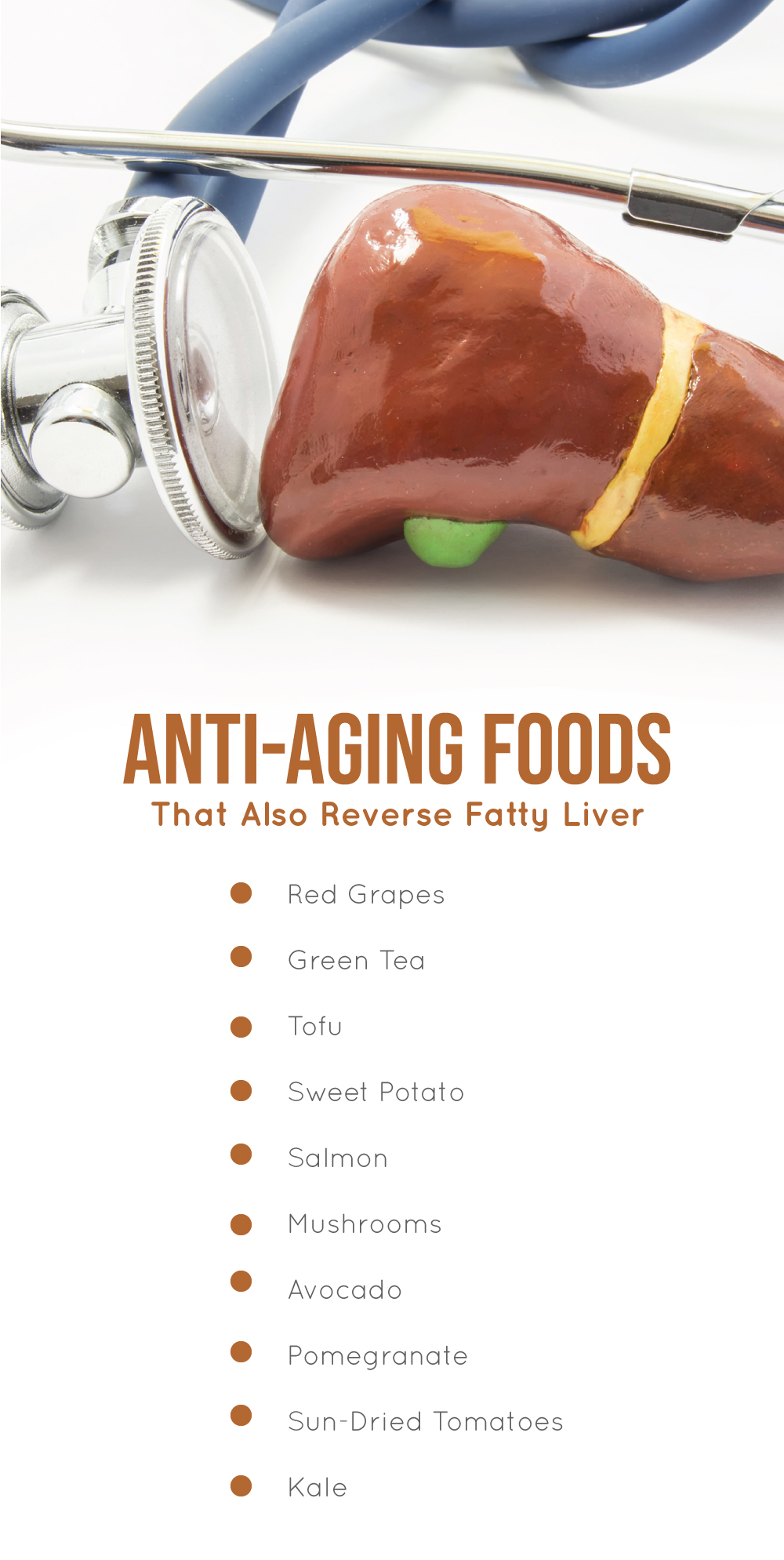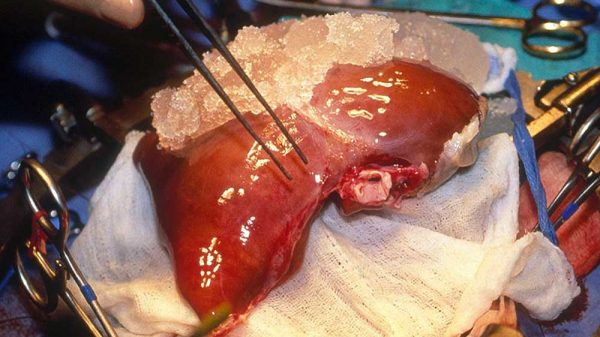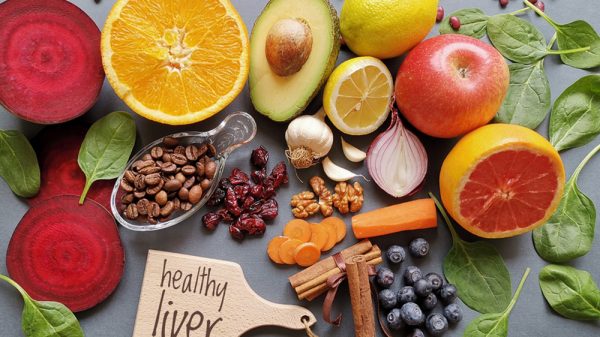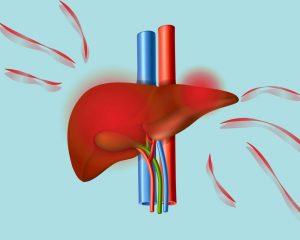The characteristic sign of aging is fine lines and wrinkles that are evident in the skin. Though science hasn’t found a way to reverse aging yet, there are a number of natural ways to slow the aging process while improving fatty liver disease. Keep reading to find out about anti-aging foods that also benefit your liver.
How Aging and Fatty Liver Disease Are Connected
Fatty liver disease primarily affects middle-aged and older adults. Age raises the likelihood of developing fatty liver disease. Moreover, increasing age raises the risk that fatty liver disease will progress to nonalcoholic steatohepatitis and cirrhosis. (1)
Why is age a factor in fatty liver disease? As we get older, cellular processes slow down and become less efficient. Day-to-day wear and tear on our bodies results in less effective organ function. We are accustomed to the outer appearance of age as it manifests in our skin. Cellular turnover and repair are much slower, meaning there is less of the collagen and connective fibers responsible for giving skin a youthful look.
Day-to-day wear and tear through the years not only affects our skin cells but also those of every other organ including the brain, liver, heart, kidneys, and intestines. This is why as we get older, we gain weight more easily, are more likely to have high cholesterol, and face a higher incidence of diseases like cancer and heart disease.
As we get older, our bodies face more difficulty processing unhealthy foods. Glucose is cleared less efficiently from the bloodstream, fat is broken down less effectively, and our metabolism slows down. All of these factors cause fat to accumulate more readily in the liver.
Aging is a one-way trip. However, science shows that certain foods, herbs, and supplements can slow down the aging process, prevent premature aging, and facilitate liver repair.
1. Red Grapes
Resveratrol is a polyphenol prevalent in a variety of plants. It is well-known for being in red wine, but you don’t need to drink to get enough resveratrol. Nonalcoholic red wine is a great option for resveratrol. Dark reddish-purple fruits and vegetables also contain resveratrol, including red cabbage, red grapes, and eggplant.
Resveratrol operates as an antioxidant in the body, which means it protects against oxidative stress. When tissues are damaged and cellular processes are compromised particles called free radicals accumulate within cells. Free radicals are reactive, which means they interact with organic particles to inflict further damage called oxidative stress. A certain level of oxidative stress in the body is normal and beyond our control – free radicals build up as a byproduct of normal cellular processes and exposure to environmental chemicals.
However, the foods we eat and the choices we make either contribute to or mitigate oxidative stress. We can minimize the amount of oxidative stress in the body by avoiding contributing factors to oxidative stress, including sun damage, ingestion of pesticides, or habits such as smoking and drinking. We can also directly fight against oxidative stress by consuming antioxidants like resveratrol.
Moreover, resveratrol protects against aging by keeping DNA strands long.
Research shows promise in demonstrating the telomere-preserving effects of resveratrol. (2) Normally, DNA is protected by telomeres that are attached to the ends of each strand. As cells divide repeatedly, the telomeres shorten with each division. When these ends are shortened, this leaves DNA strands exposed to damaging entities like free radicals. At a certain point, these ends become too short for the cell to continue to divide, which signals cell death. Shortening telomeres are a key contributor to aging. (3)
Moreover, a study conducted by researchers at the Institute of Medical Clinical Trials and other institutions in Cyprus found that administering a bioavailable form of resveratrol to patients with nonalcoholic fatty liver disease significantly reversed hepatic fat accumulation after six months. (4)
Other good sources of resveratrol include blueberries, peanuts, and strawberries.
2. Green Tea
Green tea is a popular beverage that has been used for centuries in traditional Chinese medicine. Green tea is full of catechins that reduce oxidative stress and inflammation in the brain and liver. The primary catechin in green tea is epigallocatechin-3-gallate, which is also known as EGCG.
3. Tofu
Amino acids are the building blocks of protein and are crucial for synthesizing neurotransmitters, muscle tissue, enzymes, and even DNA. Certain essential amino acids, particularly branched-chain amino acids, may even have direct benefits for liver health.
4. Sweet Potato
Vitamin C, much like resveratrol and compounds found in green tea, exhibits antioxidant activity. As revealed by its vibrant orange color, sweet potatoes are also rich in beta carotene (vitamin A). Vitamin C promotes collagen growth, which supports skin elasticity. Other excellent sources of vitamin C include red bell peppers, broccoli, citrus fruits, and avocado.
5. Salmon
Omega 3 fatty acids are a type of polyunsaturated fat that exhibits potent anti-inflammatory activity. Omega 3 fatty acids are found in the form of DHA and EPA in salmon, mackerel, sardines, and other fatty fish. In plants, omega 3 fatty acids come in the form of ALA and can be found in flaxseeds and chia seeds. against aging.
6. Mushrooms
Mushrooms are a rich source of vitamin B3, also known as niacin, which is a building block for nicotinamide adenine dinucleotide (NAD+). This compound plays a particularly critical role in cellular metabolism and is a key player in energy production in the mitochondria. The mitochondria are small organelles within cells that produce adenosine triphosphate (ATP) – our bodies’ main energy source on a molecular level. Numerous studies have revealed the connection between low NAD+ levels and age-related conditions, including declining brain function, heart disease, and muscle loss. (4)
Supporting optimal levels of NAD+ in the body is also vital for ideal liver function. In research conducted on mouse models, NAD+ even shows the potential to reverse fatty liver damage and support liver repair. (6)
Consuming dietary sources of NAD+ precursors helps your body synthesize as much NAD+ as possible. The building blocks of NAD+ include all forms of vitamin B3, or niacin. Foods rich in niacin include mushrooms, tuna fish, chicken, green peas, and potatoes.
7. Avocado
Avocado is filled with vitamin E and healthy monounsaturated fats. Vitamin E is known for its beneficial effects on skin health. The skin-enhancing effects of vitamin E stem from its ability to exert protective effects on the fats that form our cell membranes. In turn, this fortifies the structures that keep our cells intact, which helps counteract aging. (7)
Moreover, vitamin E shows promise in reducing oxidative stress associated with fatty liver disease. Researchers in the Department of Medicine at the University of Padova in Italy assessed numerous studies and concluded that vitamin E may play a role in reversing nonalcoholic liver disease, though further research is needed to confirm these impacts. (8)
On top of the beneficial effects of vitamin E, the monounsaturated fats in avocado support cardiovascular function and brain health.
8. Pomegranate
Pomegranate is rich in polyphenols that play a role in protecting against aging and fatty liver disease. Pomegranate seeds provide loads of fiber and antioxidants that support liver repair and help prevent heart disease. Pomegranate seeds can be a pain to access, so in a pinch, pomegranate juice can provide a quick way to get a load of antioxidants.
In general, fruits and veggies are excellent sources of polyphenols like anthocyanins and flavonoids that scavenge free radicals. Polyphenols effectively scavenge free radicals, in turn reducing oxidative stress and quelling inflammation in the liver and throughout the body.
9. Sun-Dried Tomatoes
Sun-dried tomatoes are rich in several health-promoting compounds, one of which is lycopene. Lycopene is a carotenoid that exerts powerful antioxidant activity that can help reverse aging.
Research suggests that lycopene may also play a role in reversing fatty liver disease. A study published in the World Journal of Gastroenterology found that administering lycopene to rats resulted in decreased activity of inflammatory cytokines, increased antioxidant activity, lowered liver enzymes, and lowered hepatic fat accumulation. (9)
Other sources of lycopene include fresh tomatoes, watermelon, and pink grapefruit.
10. Kale
Kale has secured its place as a superfood for good reason. It is filled with nutrients like vitamin K and lutein, which facilitate the reversal of oxidative damage in organs. Other leafy greens that are chock-full of antioxidants include spinach and collard greens.
Meal Ideas for Combining Anti-Aging Foods
Most of us can’t just eat a handful of kale straight out of the fridge. The key to consistently following an anti-aging diet is to make them appealing to our taste buds. Here are a few simple ideas and tips for pairing anti-aging foods in tasty combinations.
- Breakfast: For breakfast, try adding strawberries and blueberries to your oatmeal. Not only is this meal packed with fiber, berries add an extra boost of resveratrol. Pair your meal with a cup of green tea for added antioxidants and polyphenols.
- Lunch: A common misconception is that salads are not filling, and you end up starving by midafternoon. If you use the right ingredients, a salad can leave you feeling satisfied for hours. For lunch, pack a kale salad topped with sundried tomatoes, tofu, avocado slices, and pumpkin seeds. Tofu can be flavorless on its own, so before adding it to salad, try seasoning it with a little liquid smoke or curry powder. Top your salad with your favorite vinaigrette, made with balsamic vinegar and olive oil.
- Dinner: Baked salmon, sweet potato, mushrooms, and spinach create a balanced dinner that counteracts aging and fatty liver disease. Sweet potatoes can be quickly prepared by cooking in the microwave for ten minutes. Sauté mushrooms and spinach in a pan for a quick vegetable stir fry.
- Snack: Combining dried fruit and nuts to create trail mix is an excellent snack option that affords fiber, antioxidants, vitamins, protein, and healthy fats.
Things to Keep in Mind
Most of the elements of an anti-aging diet can be naturally obtained from a variety of nutritious foods. However, if you’re considering adding supplements to your diet, always consult your physician and your nutritionist or dietician. It’s pertinent to use only high-quality supplements that support your health and your individual biochemistry.
Conclusion
Until science finds a cure for aging, eating anti-aging foods is the best way to prevent rapid aging. Interestingly, many of the same cellular mechanisms that cause us to age also influence the accumulation of fat in the liver. In most cases, the best foods for slowing down the aging process also improve liver health.

References:
(1) https://www.ncbi.nlm.nih.gov/pubmed/19690397
(2) https://www.ncbi.nlm.nih.gov/pubmed/22818625
(3) https://academic.oup.com/biomedgerontology/article/73/1/39/3828300
(4) https://www.ncbi.nlm.nih.gov/pmc/articles/PMC6566048/
(5) https://www.sciencedirect.com/science/article/pii/S2468501118300063
(6) https://www.ncbi.nlm.nih.gov/pmc/articles/PMC6342515/
(7) https://www.ncbi.nlm.nih.gov/pubmed/11128973
(8) https://www.ncbi.nlm.nih.gov/pmc/articles/PMC5789322/#__ffn_sectitle























